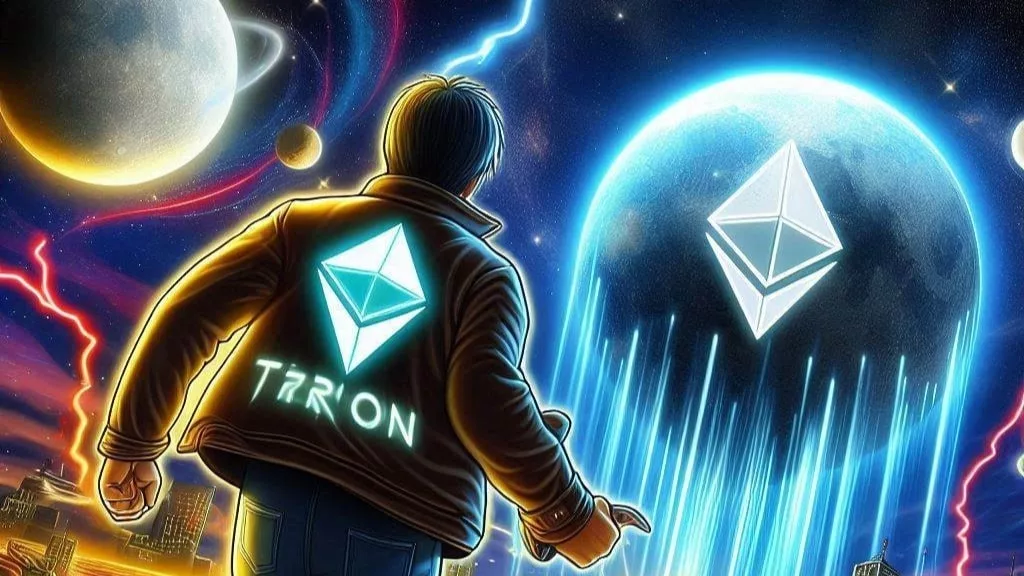Ethereum grapples with challenges like slow transaction speeds and high fees, Tron (TRX) is emerging as a promising alternative in the blockchain space. With its focus on efficiency and affordability, Tron is quickly being recognized as a potential challenger to Ethereum. Here’s a closer look at why Tron is gaining traction and how it might disrupt Ethereum’s dominance.
Tron vs Ethereum: Key Differences
Tron and Ethereum are both blockchain platforms designed for decentralized applications (d Apps) and smart contracts, but they operate with different priorities and capabilities.
- Transaction Speed: One of Tron’s standout features is its impressive transaction speed. Ethereum processes approximately 30 transactions per second (TPS), while Tron is designed to handle up to 2,000 TPS. This substantial difference means that Tron can support a higher volume of transactions with greater efficiency, making it an attractive option for users and developers who need fast and scalable solutions.
- Transaction Costs: Transaction fees are another area where Tron outshines Ethereum. Ethereum users often face high gas fees, especially during periods of network congestion. In contrast, Tron has positioned itself as a low-cost platform, which reduces the financial burden on users and developers alike. This cost-effectiveness is a significant advantage, particularly for those looking to engage in frequent or large-scale transactions.
- Content Creation: Tron is designed to connect content creators directly with their audiences, bypassing traditional platforms that take a cut of revenue. This model not only lowers costs for creators but also makes content more accessible to consumers. By removing intermediaries, Tron aims to transform how digital content is produced and distributed.
Market Impact and Financial Performance
Tron’s technical advantages are reflected in its growing market presence and financial success:
- Revenue Growth: Recent reports indicate that Tron’s revenue has surpassed that of Ethereum by 50% over the past month. This remarkable growth highlights Tron’s increasing influence in the blockchain world. According to Tron’s founder, Justin Sun, the platform is on track to potentially generate over $2 billion by the end of 2024 if this trend continues. Such revenue figures would solidify Tron’s position as a major player in the blockchain industry.
- Stable coin Market Influence: Tron has made significant strides in the stable coin sector. Tether (USDT), a widely used stable coin, has issued $33 billion worth of tokens in the past year, with nearly $19 billion of that total being based on the Tron blockchain. This means that Tron now holds a substantial share of the stable coin market, further enhancing its competitive edge against Ethereum.
Recent TRX Price Trends
The performance of Tron’s native cryptocurrency, TRX, reflects the platform’s growing success. Although TRX recently experienced a drop of over 5.4% in a 24-hour period, falling to $0.15, it has seen a notable increase of 17% over the past week. This recent uptick indicates a positive shift in investor sentiment and suggests confidence in Tron’s future prospects.
Challenges Facing Tron
Despite its strengths, Tron faces several challenges that could impact its potential to rival Ethereum:
- Security and Decentralization: One of the criticisms leveled against Tron is its perceived lack of security and decentralization. While Tron excels in speed and cost, it must address these concerns to build a more robust and secure platform. Ensuring strong security measures and achieving greater decentralization are crucial for Tron’s long-term success.
- Ecosystem Development: Ethereum has a well-established ecosystem with numerous dApps, DeFi projects, and NFTs. Tron’s success in becoming a viable alternative will depend on its ability to develop a similarly rich ecosystem of applications and services.
The Road Ahead
As Tron continues to evolve, its ability to challenge Ethereum will hinge on several factors. The platform’s focus on speed and cost-effectiveness gives it a competitive edge, but it must also address issues related to security and decentralization. If Tron can successfully navigate these challenges, it has the potential to emerge as a significant competitor to Ethereum.
In conclusion, Tron’s advancements in transaction speed, cost-efficiency, and market performance make it a noteworthy contender in the blockchain space. As the cryptocurrency landscape evolves, Tron’s ability to address its challenges and capitalize on its strengths will determine whether it can truly rival Ethereum’s dominance. Investors and users should keep a close eye on Tron’s developments as it continues to shape the future of blockchain technology.
Post Views: 359


